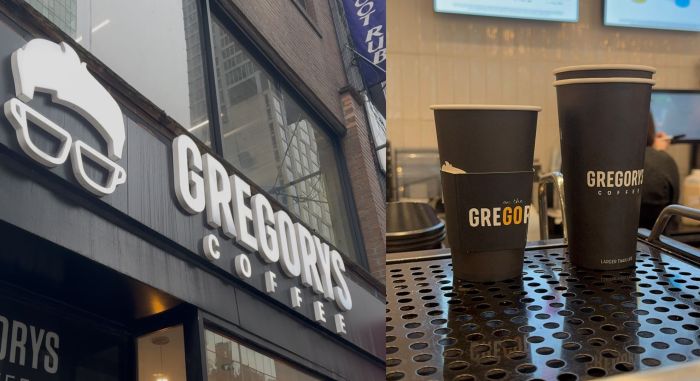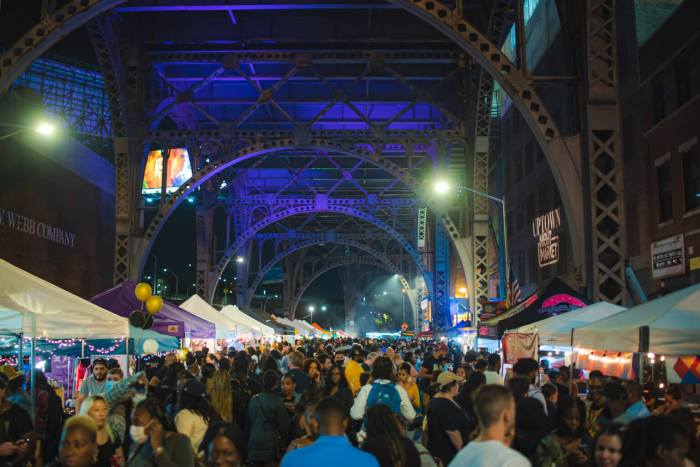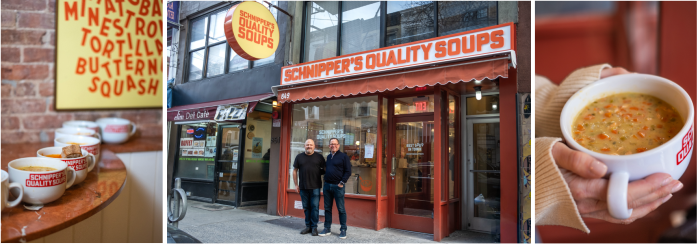
The Gombergs got in the seltzer business long before sparkling water was trendy.
For 65 years, Gomberg Seltzer Works has operated in a nondescript one-story red brick building on the corner of East 92nd Street in Canarsie.
When it was founded — before we got our carbonated water in cans and plastic bottles, and from SodaStreams — hundreds of seltzer men delivered fizzy water in glass bottles to New Yorkers throughout the five boroughs.
“Back then, there were dozens and dozens of seltzer men, and each one had their own logo stamped onto the metal neck of the siphon,” says Alex Gomberg, a fourth-generation seltzer man, who runs the company with his dad, Kenny, and uncle, Irv Resnick.
Today, Gomberg Seltzer Works is the last bottling plant in New York City and one of but three left in the entire country, according to Alex.
It is where they make “poor man’s Champagne,” Kenny said.
At just around 42 degrees, the carbon dioxide gas bonds perfectly with the triple-filtered New York City tap water to make seltzer (one-third of the New York soda fountain staple that is the egg cream, along with milk and Fox’s U-bet syrup).
It’s not easy keeping the bubbles in the bubbly water. The machines are from the early 1900s, and maintaining them is a full-time job, Alex said.
“My dad takes parts from different machines to keep them running — we have to make use of what we have,” he said.
Those handmade, siphon-topped seltzer bottles also frequently need to be repaired, with 16 parts that are difficult to find. The factory dedicated a work station to solely fixing the old bottles.
“They’re all beautiful, all etched differently, sometimes they say the year on them,” Alex said, like a museum guide in a hall of things that are nearly extinct.
Alex has a master’s degree in higher education administration from the University of Massachusetts at Amherst and was destined for a career at a college or university. But a powerful magnet pulled him back to Canarsie.
“My great-grandfather was a seltzer man, my grandfather was a seltzer man, my dad and uncle weren’t seltzer men but they kept the filling station open for the seltzer men, and now it’s me who actually turned back into a seltzer man,” said Alex, 30.
Alex enjoys the links to the past but is acutely aware that reinventing seltzer and finding younger consumers is the way to keep his business alive (especially as sparkling beverages, from LaCroix to Spindrift to offerings from Coca-Cola, Nestle and PepsiCo, are vying for their share of the market). In 2013, he launched a delivery service, Brooklyn Seltzer Boys, for home delivery in the five boroughs.
“People appreciate the taste of our seltzer delivered right to their door,” he said. “People appreciate the old-fashioned bottles. It’s a retro, nostalgic feel.”
The business is also moving on to bars and restaurants, with the seltzer found at cocktail spots like Dutch Kills and steakhouses like Arlington Club.
“Gomberg Seltzer is a big deal in the craft cocktail world,” Alex said. “Bars are moving away from the soda gun and to our bottles that keep the same spritz and the same pressure from the first to last drop.”
For expat New Yorkers living outside the delivery range, the Brooklyn Seltzer Boys offer egg cream kits by mail order that contain a seltzer bottle, Fox’s U-bet chocolate syrup, an egg cream glass, egg cream spoon and a T-shirt with the recipe on the back.
Alex’s egg cream recipe is simple: “Fox’s U-bet syrup on the bottom of a tall glass, a splash of whole milk and a spritz of our seltzer. Stir it, add a paper straw and you have a carbonated, fizzy chocolate milk.”
To keep the seltzer fizzy longer, you have to keep it in the fridge, Alex noted. “When it gets really cold in the refrigerator, the bubbles get that much bigger.”
And as anyone who’s ordered a two cents plain at a soda fountain knows, “Good seltzer should hurt when you drink it.”





































